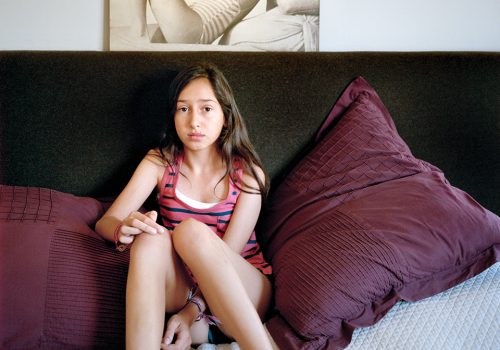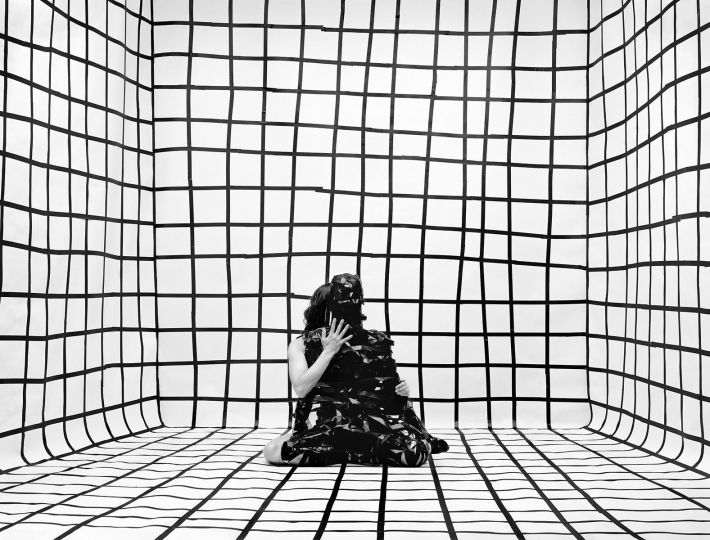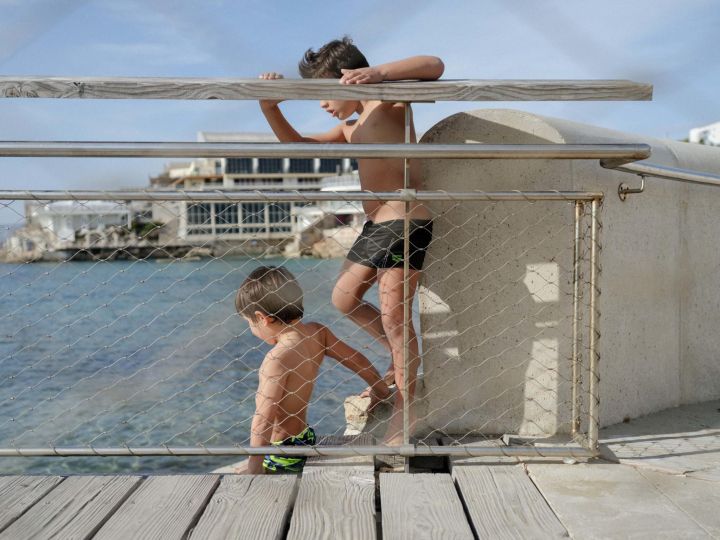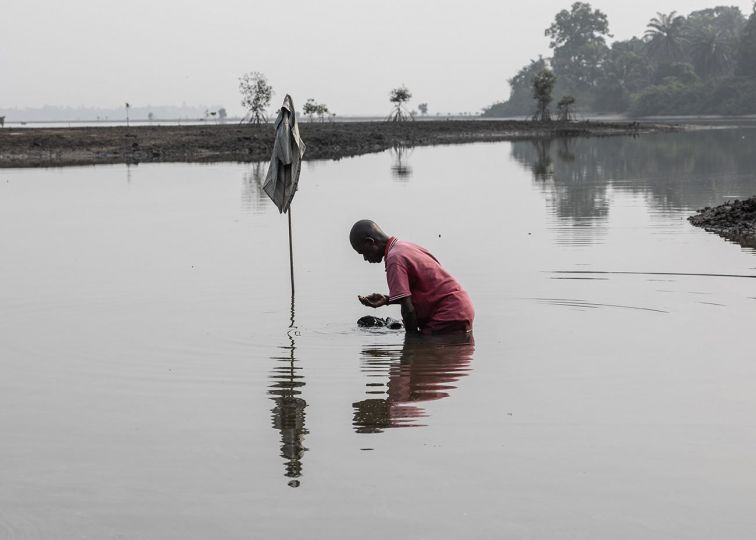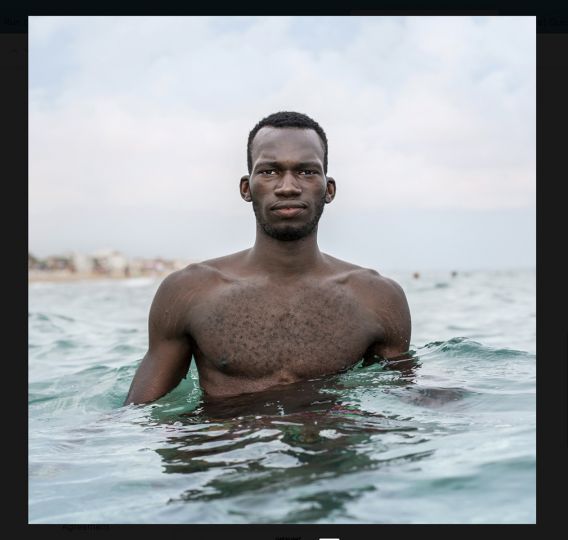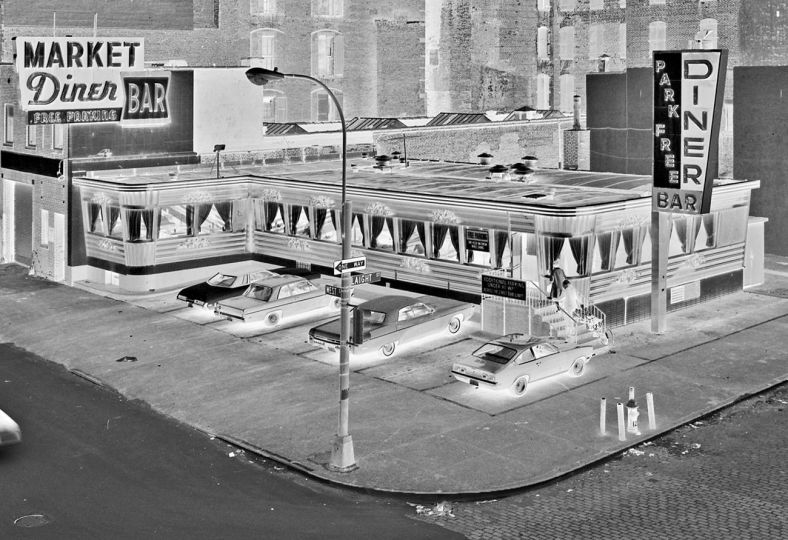The second edition of the Biennial of Photographers of the Contemporary Arab World is held in Paris from September 13 to November 12, 2017. Several venues are participating in exhibitions. In an interview with The Eye of Photography, Rania Matar, exhibited at the Institute of the Arab world evokes her work.
How did you come to work on teenage girls?
It is a very fascinating and potent age. It is relatively a quick period in one’s life, yet it marks us all on some level. I still remember those years with mixed emotions. I also have girls who were the age of the girls I was photographing when the work started. A Girl and Her Room, my previous project, was inspired by my older daughter when she was 15, and L’Enfant-Femme by my younger daughter when she was 11. Then as I saw her grow up, go through puberty and transform, it turned into Becoming. Most of my work is autobiographical in nature, following my own daughters’ through these states of being and transforming.
Why girls rather than boys?
I am one of them. I am a woman, and I was a girl. I personally went though all they are going through and still remember all those transformations myself very vividly. As such, I relate to them on a personal level and I work with them collaboratively and intimately. In addition, I have access to girls and women in the Middle East. It became especially important for me – living in the United States – to tell their story and present a different narrative from what is typically portrayed on the news, which tends to be one-dimensional. Eventually I started photographing girls and women in both cultures to focus on our shared humanity and our universality.
Is it the social and historical dimension, even anthropological, that guides you and to which your photograph is closely associated?
My work addresses the states of ‘Becoming’ – puberty, growing up, vulnerability, bodily fragility, body image, strength, imperfection, femininity. While still looking to reveal the individuality of each young woman who poses before me, I also emphasize underlying similarities rather than apparent differences – ultimately highlighting how female subjectivity develops in parallel forms across cultural lines.
Another essential element of my work is female representation in art, especially the representation of Middle Eastern women. Artists making work in or about the Middle East must constantly combat ‘orientalist visions’ that remain rooted in the collective Western unconsciousness. Prevailing issues surrounding conflict, war, or women covered by hijabs (veils) remain validating stereotypes for work from this region. My work instead takes a contemporary look at young women living in everyday circumstances and focuses on building visual, but also representational, associations between them.
At the IMA, you exhibit portraits made in Lebanon and shot in very different universes. Have you felt the same availability and interest among young people from well-off backgrounds and those who belong to refugee families?
It is important to me to give a face to different communities in Lebanon. Lebanon is a tiny country but one with a variety of religious and economic backgrounds. It is what makes Lebanon complicated yet unique and special. This work is also about my own identity: besides being Lebanese and American, I am also Palestinian and it is essential for me to represent the often ignored and forgotten Palestinian refugee community in Lebanon where a fourth generation is now being born in refugee camps. Young women in refugee camps, might live in disadvantaged conditions but they are just as beautiful and important as any other young woman, and they have similar aspirations. I wanted to give them a face and a voice – just as much as other communities in Lebanon.
What do you see in the interval between the two photographs of the same girl? Is the evolution similar?
The evolution is very interesting as the changes are personal and individual, even though there is universality to the biological transformations taking place, as girls go through puberty and see their body transform.
On some levels, I believe that the variety of the transformations one observes in the photographs cumulatively represent what each young woman is going through. Some girls, who were confident and self-assured at 9 or 10, look more reserved and self-conscious at 12 and 13. Others, who looked awkward at 10, seem confident embracing their emerging womanhood – with everything in between.
It is also important to observe the many layers of those emotions and bodily expressions within each photograph. It is not straightforward. Often the body language says something, and the gaze something else. Sometimes, the pose can look confident, but as one looks closely, one can see something else in the attitude like a detail that hints to nervousness or awkwardness. I believe each image and each transformation has many layers to it, just like each young woman – and this is what makes this project so fascinating to me. I hope to follow those young women for years to come as they make their way to adulthood.
What about freedom of dress?
I let the girls choose what to wear and how to present themselves. The only instruction I give them is not to smile and I let them pose themselves. This is important to note, as those young women are used to being photographed , they are used to the “selfie” photograph. They have studied it and perfected it. Here I am asking them to stay away from that and I am photographing them with a medium format camera and film. They cannot see the image on the back of the camera – they don’t even know what negative film is. They end up taking the photo session more seriously, revealing something deeper and more personal away from the “selfie” rehearsed attitude.
What role does color play in this work?
Color is important in this work, as the colors the girls choose to wear are also part of who they are and how they are choosing to represent themselves. As I was working on the book of L’Enfant-Femme, I noticed that, toward the end of the book, many of the girls in Lebanon and in the United States – wore pink tank tops with jean shorts. On another hand, Samira chose to wear the red hijab (veil) for her photograph at 16. The red is an integral part of how she chose to represent herself. One can think of the hijab as a tool for modesty, but the red brings another dimension to the hijab, to her personality and to the image. She is covering herself but she is also making sure she is visible and present. Those are just 2 examples.
Biennale des photographes du monde arabe contemporain
Du 13 septembre au 12 novembre 2017
Institut du monde arabe – Maison Européenne de la Photographie – Cité internationale des arts – Mairie du 4e arrondissement – Galerie Binome – Galerie Clémentine de la Féronnière – Galerie Photo12 – Galerie Thierry Marlat.
Paris, France
http://biennalephotomondearabe.com/

